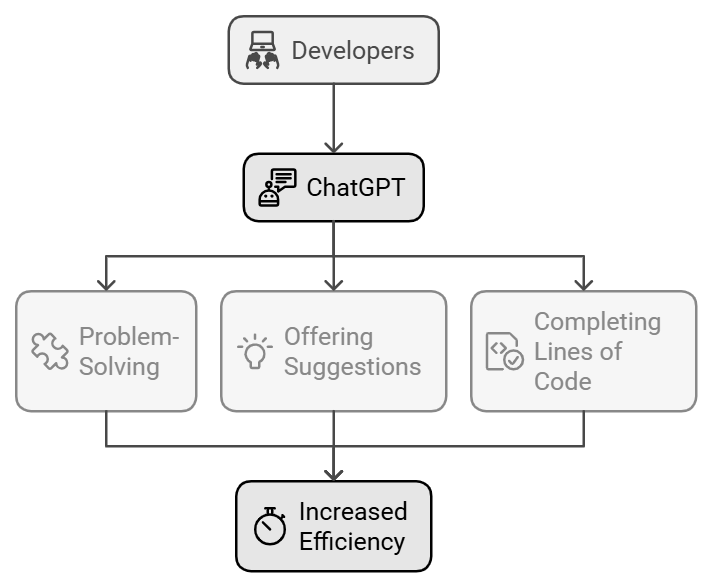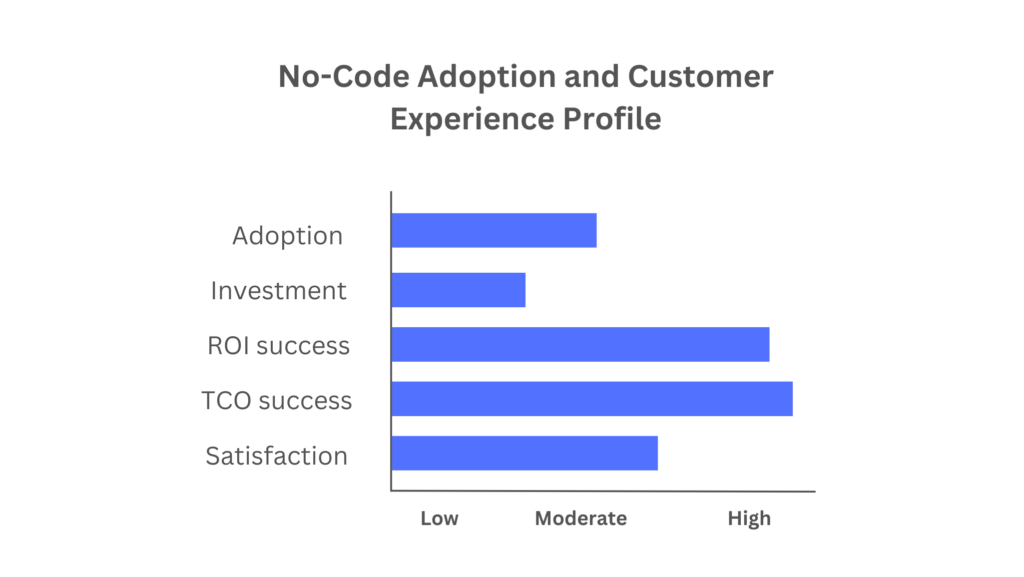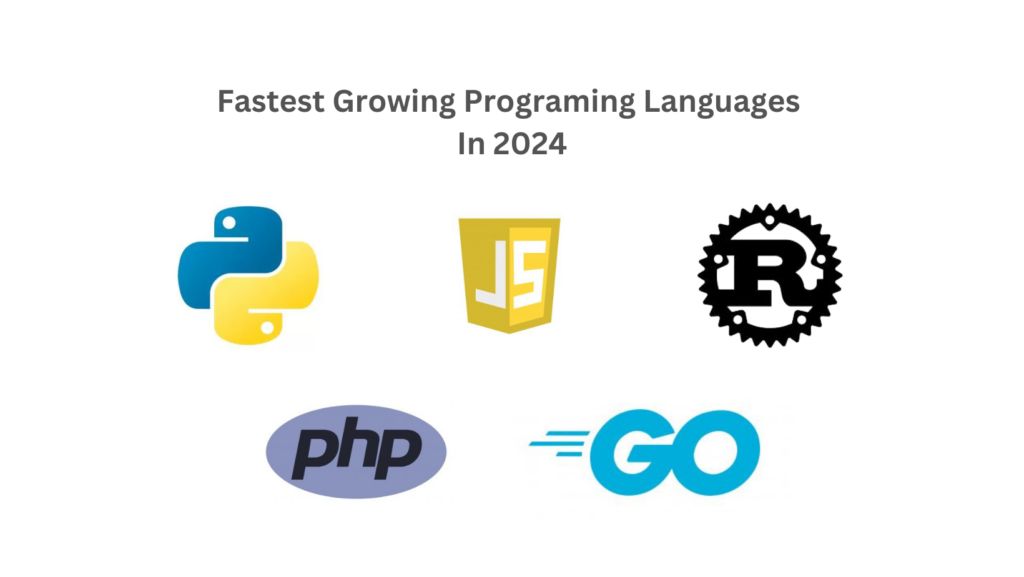Coding is advancing at a rapid pace, driven by new languages and groundbreaking technologies. According to the Bureau of Labor Statistics, software development jobs are projected to grow from 2022 to 2032, much faster than the average for all occupations.
Why understanding current coding trends is essential?
Understanding current coding trends is essential for several reasons:
- Market demand: Coding trends often reflect the current demands of the market. By keeping up with these trends, you can tailor your skills and expertise to match what employers and clients are looking for. This increases your employability and opportunities for freelance work.
- Efficiency and effectiveness: New coding trends often bring with them innovative tools, frameworks, and methodologies that can significantly improve development efficiency and effectiveness. By incorporating these trends into your workflow, you can streamline processes, reduce development time, and deliver higher-quality products.
- Competitive advantage: In today's competitive job market, staying ahead of coding trends can give you a competitive edge over other candidates. Employers value candidates who demonstrate awareness of the latest technologies and trends, as it shows a commitment to continuous learning and improvement.
- Career growth: Understanding coding trends allows you to anticipate future industry developments and position yourself for career growth. By acquiring expertise in emerging technologies, you can become a sought-after specialist in your field and advance into higher-paying or more senior roles.
- Innovation: Coding trends often pave the way for innovation by introducing new concepts, ideas, and approaches to software development. By staying informed about these trends, you can harness the latest innovations to create groundbreaking solutions and push the boundaries of what's possible in your field.
Let's explore the future of coding and examine seven transformative trends.
Coding trends 2024
1. Artificial Intelligence
Artificial Intelligence (AI) is truly transforming the coding world. Python, with its powerful libraries like TensorFlow and PyTorch, makes building AI and machine learning applications much easier. But AI isn’t just about creating smart apps; it's also your new best friend in coding.
Have you tried GitHub Copilot? It’s like having an extra set of hands that can suggest code snippets, find bugs, and even complete functions for you.
Additionally, OpenAI's ChatGPT, for example, is revolutionizing how developers interact with code. This intelligent AI chatbot can assist in problem-solving, offering suggestions, and even completing lines of code, making coding faster and more efficient than ever before.
This means less time spent on repetitive tasks and more on the creative problem-solving that makes coding fun. AI is making coding faster, smarter, and more efficient.
2. No-code
Just as AI is enhancing coding efficiency, no-code platforms are making development accessible to everyone. One noteworthy player in the no-code arena is Fuzen, a specialized platform tailored for building SaaS (Software as a Service) applications. With Fuzen, users can effortlessly create custom SaaS solutions without the need for coding expertise. This empowers entrepreneurs and businesses to bring their ideas to life quickly and cost-effectively.
This trend is a game-changer because it lowers the barrier to entry for software development. Businesses can quickly prototype and launch solutions, staying ahead of market demands.
For developers, it means more time to focus on complex tasks while empowering others to turn their ideas into reality. No-Code is all about speed, innovation, and accessibility.
3. Blockchain applications
Blockchain is revolutionizing security and transparency. Blockchain technology is about more than just cryptocurrencies; it’s a game-changer for creating secure, decentralized applications (dApps). If you’ve played around with Ethereum, you know about Solidity, the language for writing smart contracts. And now, languages like Rust and Move are stepping up to enhance blockchain performance and security.
Blockchain ensures data integrity without needing intermediaries, which is a big deal for industries like finance, healthcare, and supply chain management. For developers, it opens up a world of opportunities to build secure and reliable applications, making it an exciting area to explore.
4. Sustainable software development
There’s also a growing focus on Sustainable Software Development in 2024. The tech industry’s carbon footprint is a significant concern, with data centers consuming a lot of energy. Developers are now focusing on writing energy-efficient code and optimizing algorithms to reduce resource usage.
Using energy-efficient languages and adopting green computing techniques helps the environment and improves software performance and cuts costs. As awareness of sustainability grows, expect more tools and frameworks designed to support eco-friendly coding practices. It’s a win-win for the planet and our software.
5. Serverless computing (FaaS)
Finally, as we focus on sustainability, Serverless Computing, or Function as a Service (FaaS), is transforming how we deploy applications. Platforms like AWS Lambda, Google Cloud Functions, and Azure Functions let you run code without worrying about managing servers.
Serverless computing automatically scales and saves costs since you only pay for the compute time you use. This simplifies development, allowing you to focus on writing code and creating features rather than managing infrastructure. Serverless architectures lead to faster development cycles and more responsive applications.
6. Programming and programming languages
Now, let's talk about programming languages.
JavaScript (JS) remains a powerhouse in web development, powering dynamic and interactive websites. Its versatility and widespread adoption make it a must-know language for any developer looking to build modern web applications.
Python continues to soar in popularity due to its simplicity, readability, and vast ecosystem of libraries and frameworks. From web development to data science and machine learning, Python's flexibility makes it a favorite among developers of all skill levels.
Ruby is beloved for its elegant syntax and developer-friendly features. While its usage may have declined slightly in recent years, Ruby still maintains a dedicated community and remains a top choice for building web applications, particularly with the Ruby on Rails framework.
Go (Golang), a relatively new language developed by Google, has been gaining traction for its simplicity, performance, and built-in support for concurrency. With its focus on simplicity and efficiency, Go is becoming increasingly popular for building scalable and high-performance backend systems.
Rust is another rising star in the programming world, known for its focus on safety, performance, and concurrency. Rust's memory safety features make it ideal for systems programming, where reliability and security are paramount.
Each of these languages brings its own unique strengths to the table, catering to different use cases and developer preferences. Whether you're building web applications, system software, or machine learning models, there's a programming language out there to suit your needs.
7. Cybersecurity
Amid all these advancements, cybersecurity remains a top priority. With cyber threats becoming increasingly sophisticated, developers need to ensure that their applications are secure from the ground up.
Continuous monitoring, secure coding practices, and robust backup solutions are essential to keep data safe. Developers must integrate security measures throughout the entire development cycle and stay updated on the latest cybersecurity trends and threats.
By addressing cybersecurity concerns proactively, developers can mitigate risks and safeguard sensitive data from potential breaches and attacks.
Conclusion: What is the future of coding
The future of coding is bright and full of possibilities. AI is making coding smarter and more efficient, Blockchain is offering secure solutions, No-Code is democratizing development, Sustainable Software Development is promoting eco-friendly practices, and Serverless Computing is simplifying deployment.
By embracing these trends, developers and organizations can stay ahead in the rapidly evolving tech landscape. The coding world is changing, and those who adapt will thrive in this exciting future. So, let’s embrace these innovations and lead the way forward!
FAQs
1. What are the best coding languages to learn for modern software development?
Some of the best coding languages to learn include Python, which is widely used for AI and data science, JavaScript for web development, and Rust for systems programming. These languages cater to various development needs and are highly sought after in today's job market.
2. How do no-code platforms contribute to the software development process?
No-code platforms like Fuzen allow businesses to quickly build custom applications without needing to write extensive code. These platforms simplify the development process and enable non-technical users to create and customize software, making them ideal for entrepreneurs and startups looking to innovate rapidly.
3. Why is it important to keep up with the latest coding languages and development trends?
Staying updated on trends like AI and blockchain is key to innovation. Fuzen helps you stay ahead by integrating these trends into a no-code platform, making it easy to build cutting-edge applications.
4. How does Fuzen support the development of blockchain applications?
Fuzen allows you to integrate blockchain functionalities into your no-code applications, offering enhanced security and decentralization without needing blockchain expertise.
5. How can Fuzen help with sustainable software development?
Fuzen’s no-code approach reduces environmental impact by streamlining development and hosting in the cloud, helping you build sustainable applications with minimal resource use.
6. How can developers ensure the security of their applications?
Integrating security into the development process is crucial for building secure applications. Developers should follow secure coding practices, implement encryption, and regularly update software to fix vulnerabilities. Understanding cybersecurity trends and potential threats helps developers build resilient and protected applications.





